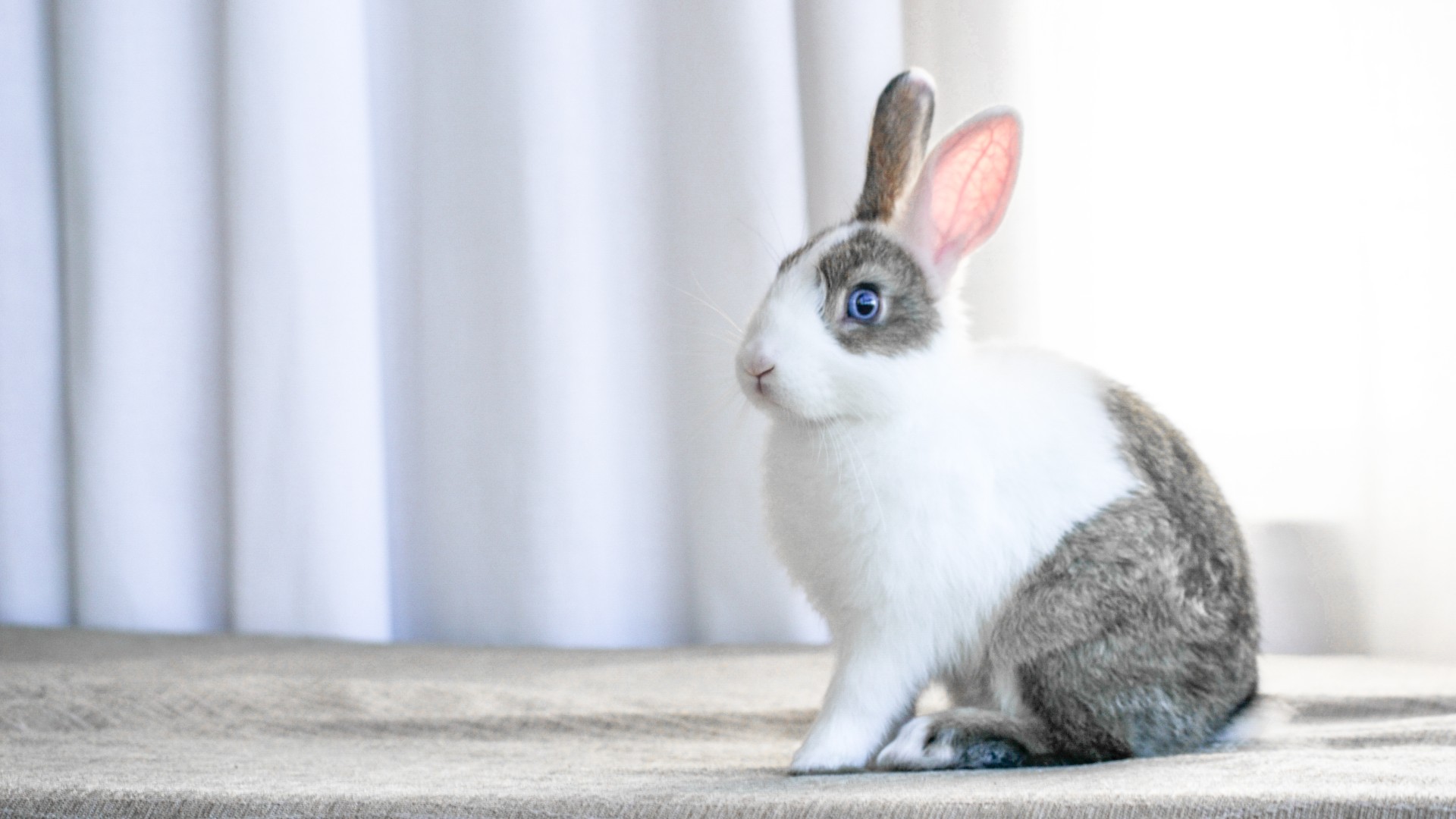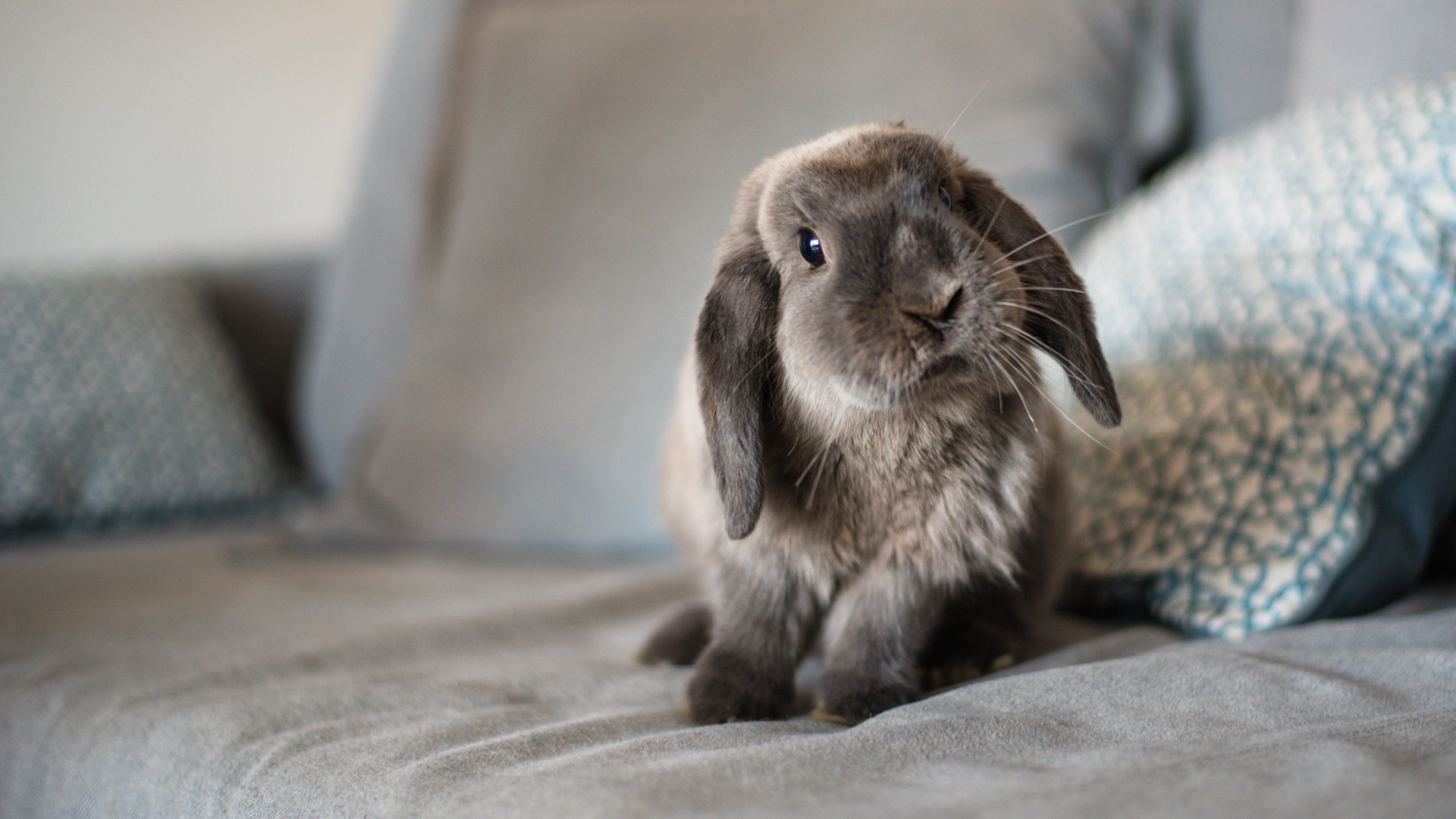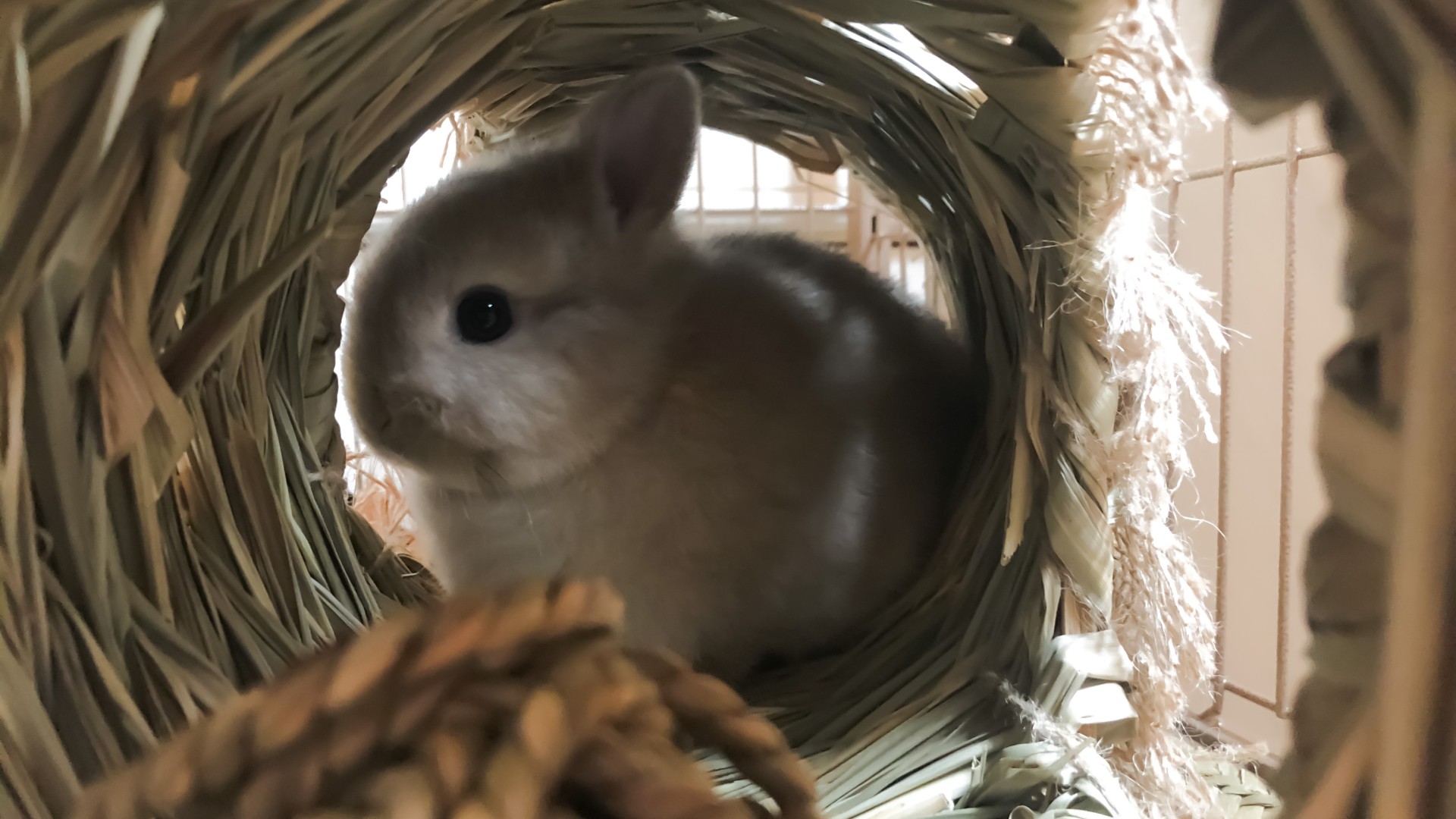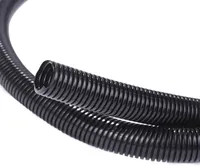How to bunny-proof a room and keep your indoor rabbit safe
Learn how to bunny-proof a room with this in-depth guide (spoiler alert: it’s easier than you think!)

If you’ve just welcomed a rabbit into your family, learning how to bunny-proof a room is likely high on your list of priorities. While ensuring your home is as hazard-free as possible does take some time, it’s well worth doing if you want to ensure your floppy-eared friend stays safe while having free reign of their new environment.
While investing in one of the best indoor rabbit hutches is a great way of keeping your bunny secure at night, during the day you may prefer to let them hop about the house. If that’s the case, you’ll want to make sure that your pet can engage in all of their natural behaviors without those posing a risk to their health or your possessions!
When it comes to the question of how much space does a rabbit need, the answer is more than you might think, which is why most people prefer to let their bunnies roam free around the house during daylight hours. Thankfully, this doesn’t need to mean chewed skirting boards, clothes and cables as there are lots of simple things you can do to keep your home and your bunny safe.
Below, we walk you through what to be on the lookout for in each room of your house and how you can ensure you make your rabbit’s environment as secure as possible. Plus, we spoke to Dr. Rebecca MacMillan to get her thoughts on how to make your home safe and prevent your bunny from destroying your belongings.
How do I make my house safe for rabbits?
A lot of pet parents are choosing to invest in one of the best rabbit harnesses as a way of letting their floppy-eared friends explore their surroundings safely and securely. And while you can certainly use these indoors to achieve the same effect, you may prefer to let your rabbit roam about unrestricted.
If that's the case, bunny-proofing, also known as rabbit-proofing, is one of our top tips for owners of indoor rabbits. It's a great way to keep your floppy-eared friend safe, while also protecting your living spaces from their potentially destructive habits. While chewing, burrowing, and digging are all healthy and normal rabbit behaviors, common household features, such as wires, can pose a safety hazard.
"When making your house safe for your rabbits it is important to get down to their level and see what hazards are around," says Dr. MacMillan. "Trailing electrical wires will need to be moved out of reach or tidied with a protective cable tidy.
Get the best advice, tips and top tech for your beloved Pets
Houseplants will need to be moved to an area of the house your rabbits do not have access to, as well as any other toxins like cleaning chemicals or human food items.
Take a look at your flooring, if it is too slippery your rabbit may injure themselves when running around. Equally, if they are kept on a carpeted area, then prepare for your carpet to be chewed and scratched! Hardwood or tiled floors tend to work best for rabbits.
Think about restricting access to certain safe areas of the house only. Using pet or baby gates to zone off a safe place in the house for your rabbits is usually a good idea."
You'll want to give some thought to whether you're wanting your rabbit to be able to roam freely throughout your home or whether you'd prefer to grant them access to a single room only. The benefit to just letting them hop about in one room means you'll have less bunny-proofing to do, but if you bunny-proof your entire home they can be a fully-fledged member of your family. It's totally up to you which route you decide to go down.
How to bunny-proof your wires

If there's one thing above all others that your rabbit will want to make a beeline for when they're roaming free, it's those wonderfully enticing wires that remind them of the roots and shoots they so love chewing when they're outdoors. And given that your home is likely filled with all sorts of electronics, we're guessing there's no shortage of tantalising wires for your bunny to sink their teeth into.
The last thing you want is to have your gadgets and gizmos destroyed and trust us, if you don't protect them, they will be. Rabbits have razor-sharp teeth, which the soft plastic insulation that’s used in power cables offers no protection against. While training your bunny can help deter them from chewing certain things, it’s extremely hard to deter them from going after wires. Highly curious and naturally fond of crawl spaces, the back of your TV or office desk call to your rabbit in much the same way as that bar of chocolate calls to us humans.
But, there is a solution to this problem and all it's going to take is a little rearranging of your furniture to make those wires less accessible. Where possible, push furniture up against the wall to conceal wires and sockets, angle desks into a corner to create a closed-off space for the wires, and use pet fences in areas where wires can’t be hidden.
If you’re not wanting to use a pet fence and have spaces where there’s no option but for wires to be exposed, we’re huge fans of using split-loom tubing. This is an affordable and straightforward hack where you slip tough plastic piping over your electric cables. It’s flexible enough for you to attach but strong and durable enough that your bunny’s teeth can’t penetrate it.
Alex Tech 25ft – 1/4 inch Split Wire Loom TubingAvailable in a range of lengths to suit every project, this split loom makes protecting your wires a breeze. Made from high-quality polyethylene, it's resistant to abrasion and chemical corrosion, and is suitable for use throughout the home.
How to bunny-proof your flooring
Alongside chewing, the other thing that makes your bunny feel like they've died and gone to heaven is digging. In the wild, female rabbits are often the ones to dig tunnels and burrows for their families, so if you have a female floppy-eared friend, she's likely going to want to satisfy her natural instincts by trying to dig on any padded surface she can sink her furry little feet into.
Now, unfortunately, you're not going to be able to stop your rabbit from digging, it's embedded in their DNA so trying to rid them of this behavior will be a futile exercise. But, you can discourage them from digging in certain places or use diversion tactics to get them to dig in a designated place.
The best way to do this is to simply keep your rabbit in a room that doesn't have carpet. That way there's zero risk of them destroying it and it will also ensure they don't ingest any of the toxic fibres that are present in carpets and rugs. Pop them in a room with hardwood floors or tiles as they can't dig into either of these and as a nice bonus, they're easy to clean too.
If necessity warrants your bunny being in a carpeted room, cover the carpet with a plastic mat or tarp, especially around the corners and the doorway. You can also try mixing up a natural spray of equal parts white wine vinegar and water and applying it to your carpet. Some rabbits really dislike the taste and it will stop them from chewing, but it does leave a light residue.
How to bunny-proof your baseboards
Another attractive chewing option that can prove irresistible to bunnies is the trim that runs along the lowest part of an interior wall, known as the baseboard. Because rabbit’s teeth grow continuously, they’re always in search of tough surfaces that will allow them to wear their teeth down. Given that corners are their preferred place to dig and chew, your baseboards are vulnerable to being destroyed.
The best way to protect your baseboards is to apply a protector. You can make these yourself by using wooden planks or cardboard or by running a fence around the perimeter. Cat scratch mats also do a wonderful job, provided they’re nice and flexible, and plastic corner protectors can work well too.
How to bunny-proof your furniture

Next on the list of things that your rabbit is likely to find utterly irresistible is your furniture. Yip, that bed or couch is just too good to resist because it combines both of a bunnies favorite things - chewing and burrowing.
To avoid your rabbit hanging out where you don't want them to be (and potentially destroying your furniture in the process!) we recommend that you block off the underneath of your furniture using storage cube fencing. This is really affordable, easy to assemble and comes in all sorts of configurations, making it piece of cake to slot into place.
When it comes to the legs of your furniture, shoe protectors made from PVC, rubber, or silicone that slip over the legs are a great way to go. And, as well as protecting your chairs from bite marks, you'll be able to ensure your hardwood floors stay scratch-free. You gotta love a win-win!
When it comes to your couch, the best solution is the same one that feline pet parents often adopt and that’s using transparent scratch guards or plastic protectors. If you want a rustic and funky look, why not consider a large willow bridge? Found in most pet stores, willow bridge toys are made from sticks and are joined together in an elbow shape that fits nicely around couch corners.
Trixie Natural Living Willow Bridge
Made from real beech wood, this eye-catching bridge features a high-quality design and can be used as either a toy for your rabbit to hide under or as a unique protector for the corners of your couch.
Beware of houseplants
Learning how to care for a house rabbit takes some practice and one thing that's often overlooked is the fact that many common houseplants are toxic to rabbits. Unlike their wild relatives, domesticated bunnies often lack the instincts to know which ones are safe to nibble on and which ones aren’t.
If you’re keeping your rabbit contained to one room of the house, we recommend forgoing the plants in that space entirely or fencing off large potted plants to prevent your bunny from gaining access. It's important that all plants are kept off the ground and out of reach of your rabbit - not only will this prevent them from eating things they shouldn't but it will also stop them from throwing soil all over your floor!
How do I stop my rabbit from destroying my house?

One of our favorite bunny-proofing tips is to distract and divert your floppy-eared friend with plenty of fun and safe chewing and digging options. The best rabbit toys are a wonderful way of occupying and entertaining your rabbit, while also providing them with plenty of exercise and mental stimulation.
"If you want to stop your rabbit from destroying your house, give them plenty of mental and physical stimulation," Dr. MacMillan confirms. "A busy rabbit is less likely to be bored and destructive. Make sure your rabbits have a selection of toys to play with and rotate these regularly to hold their interest. Supervising your rabbits while they exercise and providing them with regular, gentle interaction can also reduce the chances of them ruining your home."
As with all things, variety is the spice of life, so choose a mixture of chew toys, climbing toys, and puzzle toys to hold your rabbit’s attention and keep their days interesting. Tunnels are also a great choice as these tap into their love of burrowing and can stop them from making a beeline for underneath your furniture.
"You could also set yourself up for success by zoning off a specific area of the house and removing any valuable possessions or items of precious pieces of furniture," Dr MacMillan adds. "If you are worried about your rabbits chewing table or chair legs in their exercise area, then you could cover these with cardboard tubes or other flexible tubing to add an extra layer of protection. Remember that all rabbits will want to chew and dig to a certain degree, it is in their nature. Providing a digging box and plenty of chewable toys can direct this behavior appropriately."
Kaytee Apple Orchard SticksThese all-natural wood chews are great for preventing boredom and keeping your rabbit's teeth in tip-top condition. Made from all-natural ingredients, this affordable pack of three features 10 sticks per pack and make a great guilt-free treat.
Just welcomed a bunny into your family? Take a look at this guide where our vet explains what to feed a rabbit (plus 4 surprising things they should never eat). Also, here's how to get rid of fleas on rabbits if you suspect your bunny might be infested with pesky parasites.

Kathryn is a freelance writer who has been a member of the PetsRadar family since it launched in 2020. Highly experienced in her field, she's driven by a desire to provide pet parents with accurate, timely, and informative content that enables them to provide their fur friends with everything they need to thrive.
Kathryn works closely with vets and trainers to ensure all articles offer the most up-to-date information across a range of pet-related fields, from insights into health and behavior issues to tips on products and training.
When she’s not busy crafting the perfect sentence for her features, buying guides and news pieces, she can be found hanging out with her family (which includes one super sassy cat and a kitten), drinking copious amounts of Jasmine tea and reading all the books.
She has written for a range of publications, including Fit&Well, Top Ten Reviews, LiveScience, Goodto, and Product Hunt.



